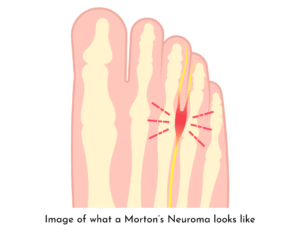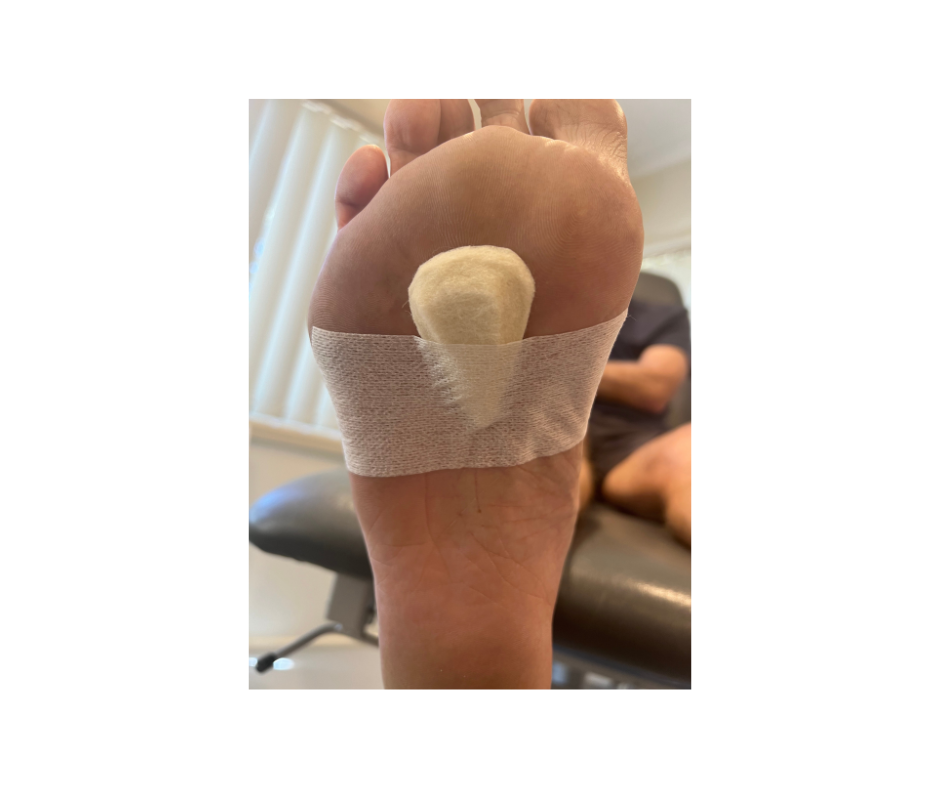Morton’s Neuroma Help – Fix the Burning Pain in Your Forefoot
Do you feel like you're stepping on a pebble, or notice tingling or burning in the ball of your foot or toes? You might be experiencing Morton’s Neuroma, a common but often misunderstood foot condition. At Sports & Injury Management, I frequently treat active people across Diamond Creek, Eltham, Wattle Glen, Greensborough and beyond, helping them return to activity pain-free.
This blog covers:
- What Morton’s Neuroma is
- Common causes and symptoms
- At-home strategies to relieve pain
- When to seek podiatry treatment
- What treatment options look like in my clinic
What Is a Morton’s Neuroma?
Morton’s Neuroma is a thickening of one of the nerves that runs between the long bones in your foot (metatarsals), most often between the 3rd and 4th toes. It’s not a true tumour but rather a benign nerve swelling caused by repeated irritation or pressure.
Your feet are home to an intricate network of bones, tendons, muscles and nerves. These nerves pass through tight spaces between bones, especially in the forefoot. When that space becomes compressed, the nerve can become inflamed and enlarged—leading to classic symptoms.

Common Symptoms of Morton’s Neuroma
At my Diamond Creek podiatry clinic, patients commonly describe:
- A burning or tingling sensation in the toes
- Numbness in the ball of the foot
- Sharp, electric-like pain with each step
- A feeling of walking on something small—like a pebble or rolled-up sock
Symptoms can come and go, but they often flare up after long walks, standing, running, or wearing tight shoes.
What Causes Morton’s Neuroma?
Morton’s Neuroma doesn’t usually stem from one single issue. It develops over time due to a combination of mechanical overload, structural imbalances, and footwear choices.
-
Structural Risk Factors
Your foot structure plays a major role in how pressure is distributed:
- Flat feet: This can cause more pressure being placed through the soles and balls of your feet. When you add this to a sudden increase in activity, this can lead to an increase in pressure through the ball of your foot resulting in the Morton’s Neuroma developing.
- High arches: Having high arched feet can also lead to people having Morton’s Neuroma. Quite often, people with high arches have a higher load placed through the balls of their foot as they may not pronate enough to absorb the pressure being applied from the ground and body. They can also have more ankle and calf muscle stiffness which can lead to an increase in pressure through the balls of your feet.
- Metatarsal variations: A short 1st metatarsal or long 2nd metatarsal can cause excess loading between the 3rd and 4th toes, increasing nerve compression risk.
-
Repetitive Load & Activity
Any repetitive, high-pressure activity can aggravate the nerve:
- Running (especially long distance or uphill)
- Dancing (e.g., ballet, jazz, contemporary)
- Racket sports like tennis, squash or padel
- Prolonged standing or kneeling for work (e.g. tradies, nurses, teachers)

-
Footwear Choices
Tight or ill-fitting shoes are a major trigger. Especially:
- Narrow toe boxes (pointed or fashion shoes)
- High heels that shift body weight forward
- Worn-out runners with no shock absorption

-
Past Injuries or Surgeries
A prior foot trauma or surgical procedure can alter pressure distribution and contribute to nerve compression.
At-Home Strategies to Relieve Morton’s Neuroma Pain
Early intervention can stop this condition from worsening. Here are 5 simple things you can do now to relieve your pain:
-
Switch to Supportive Footwear
Look for shoes with:
- A wide and deep toe box
- A toe spring (the front of the shoe curves slightly upward)
- Plenty of cushioning and shock absorption
Get your foot professionally measured for length and width. If you're unsure what to wear, our podiatrists can recommend suitable brands for your foot type.

-
Modify Your Activity
Too much time on your feet can worsen the nerve irritation. Reduce high-impact activities temporarily and add rest days to your training week.
Avoid going barefoot at home on hard floors and try cross-training (e.g. swimming or cycling) while your foot recovers.
-
Apply Ice to Reduce Inflammation
Use an ice pack wrapped in a towel on the ball of your foot for 5–10 minutes, up to three times a day, especially after physical activity.
* If you have diabetes or reduced foot sensation, consult a podiatrist before icing.*
-
Prioritise Recovery and Sleep
Lack of sleep has been shown to increase your risk of injuries. Aim for 7–8 hours of uninterrupted, quality sleep. Recovery is just as important as your workout.
-
Stretch Your Calves
Tight calves can reduce ankle motion, puting more pressure forward into the forefoot.
Try this stretch:
- Stand facing a wall with one leg behind
- Keep your back knee straight and heel on the ground
- Lean forward and hold the stretch for 30 seconds
- Repeat 3 times per leg
Watch my YouTube video on how to perform a calf stretch.
When to See a Podiatrist for Morton’s Neuroma
If you’ve been trying the strategies above for a couple of weeks with no real change, or if the pain is getting worse, it’s time to see a podiatrist. Morton’s Neuroma can become more difficult to treat the longer it’s left unmanaged.
I’ll perform a full assessment to:
- Pinpoint if your pain is a neuroma or another condition (like metatarsalgia, plantar plate injury, or arthritis)
- Check your footwear, foot alignment and movement
- Develop a personalised treatment plan to get you moving pain-free again
Click on How I Help , if you would like to read about someone with this condition that I have helped.
Morton’s Neuroma Treatment in Diamond Creek
At Sports & Injury Management, I regularly help clients from Diamond Creek, Hurstbridge, St Helena and Eltham get back to the activities they love. With over 16 years of experience, I combine evidence-based care with personalised treatment plans.
After a thorough assessment, I will provide you with treatment options. Treatment options may include:
- Padding and strapping
- Strengthening or mobility exercises
- Education on load management and footwear
- Referral for imaging if needed
- Custom orthotics to reduce pressure between the toes

Don’t Let Foot Pain Hold You Back
Persistent foot pain can be incredibly frustrating – especially when it interferes with work, running, or simply walking. But you don’t need to push through the discomfort.
If you suspect a Morton’s Neuroma or you’re just unsure, I’m here to help.
Call today on 0424 676 207
or
Book online now and take your first step toward long-term relief.
FAQs About Morton’s Neuroma
Q: Will Morton’s Neuroma go away on its own?
A: Mild cases can improve with rest and good footwear, but ongoing cases need professional support to avoid worsening or permanent nerve changes.
Q: What’s the difference between Morton’s Neuroma and metatarsalgia?
A: Metatarsalgia is general forefoot pain, often due to pressure. Morton’s Neuroma includes nerve symptoms like tingling, burning, or numbness.
Q: Do I need surgery for Morton’s Neuroma?
A: Surgery is rarely needed. Most cases respond well to conservative treatment with footwear changes, orthotics, and activity modifications.
Visit Sports & Injury Management in Diamond Creek.
I proudly serve patients from Diamond Creek, Wattle Glen, Eltham, Greensborough, and surrounding areas.
Click here to find us on Google Maps.
Sports & Injury Management – Getting stronger, staying active.
